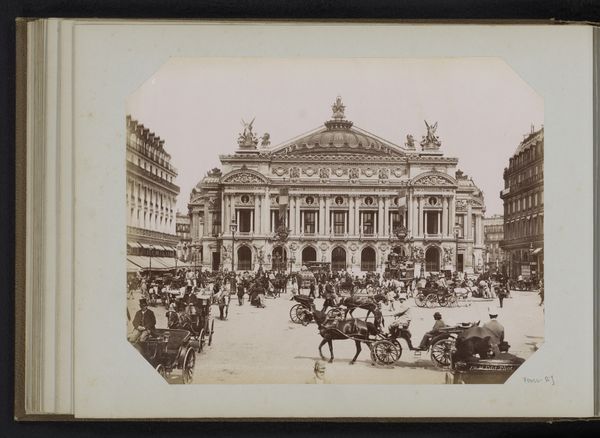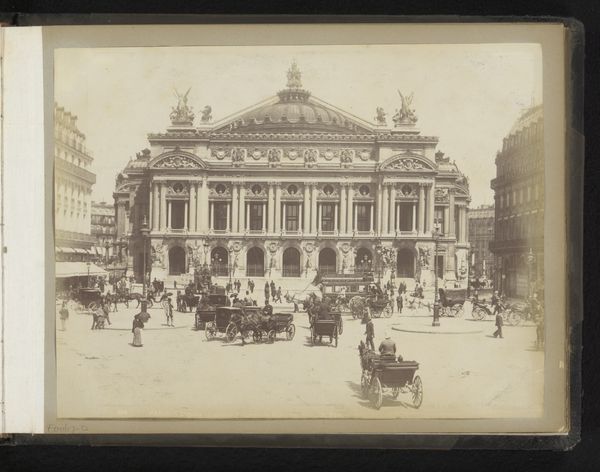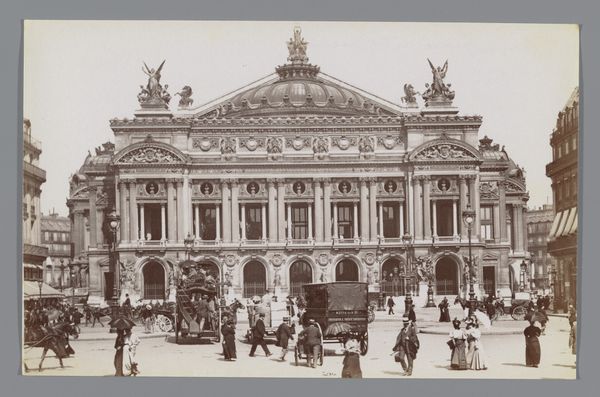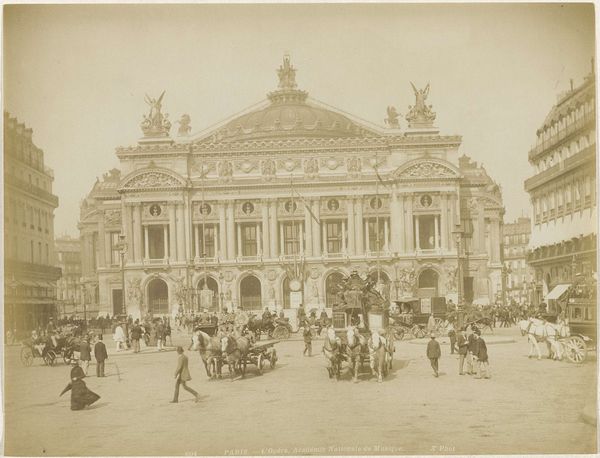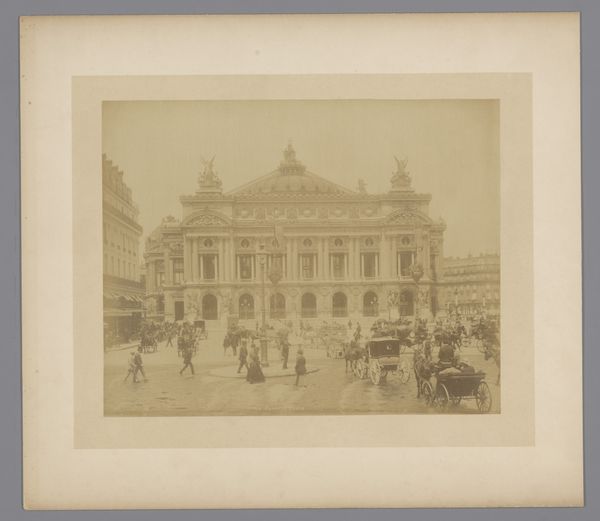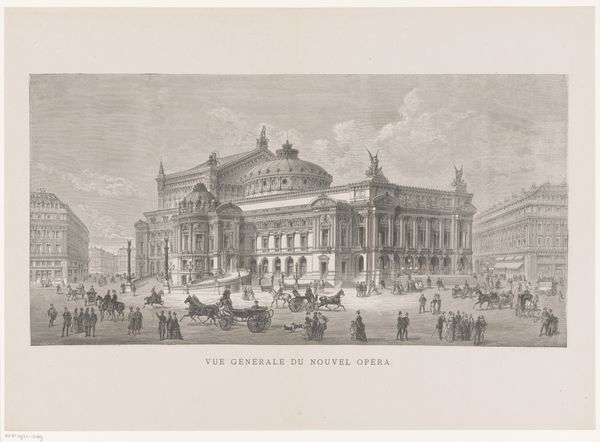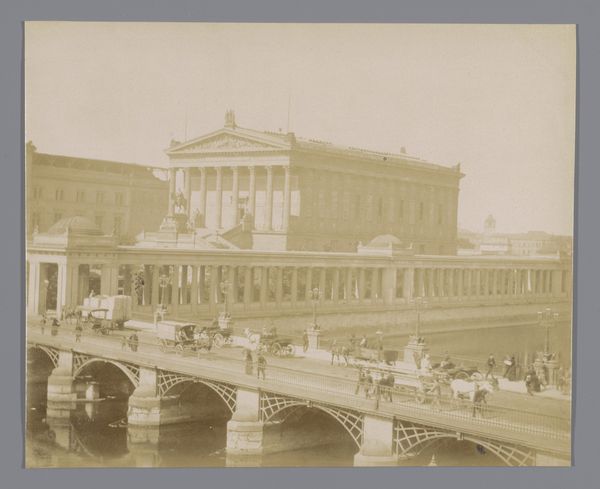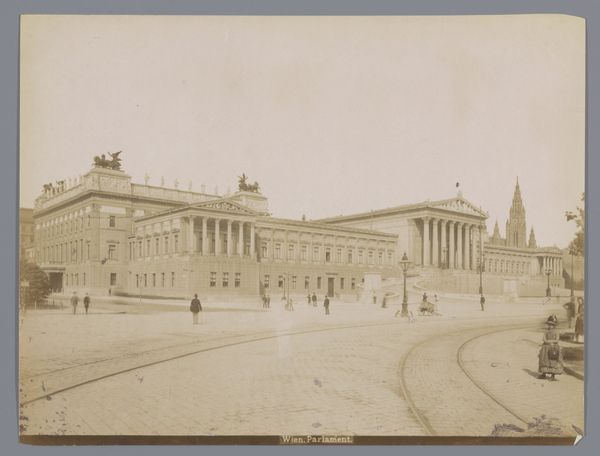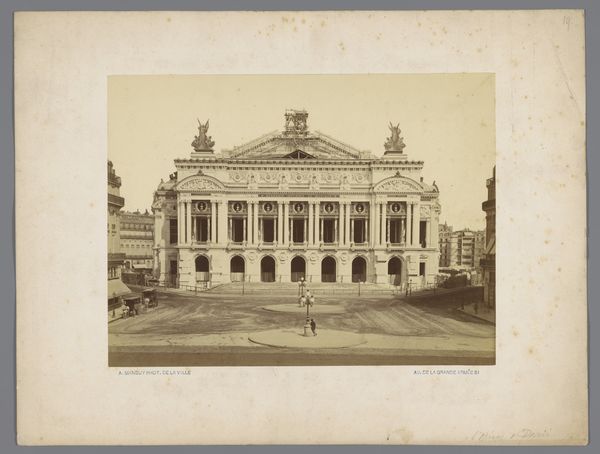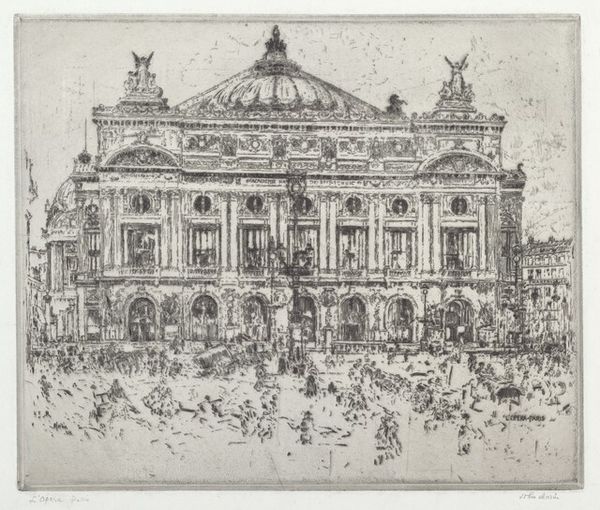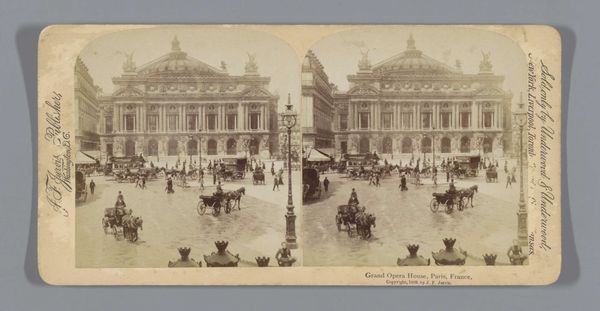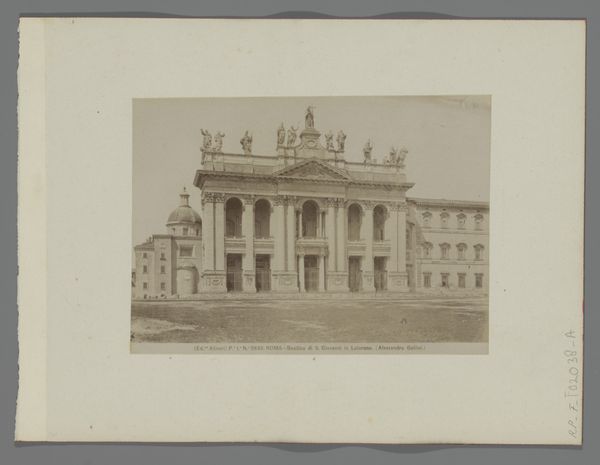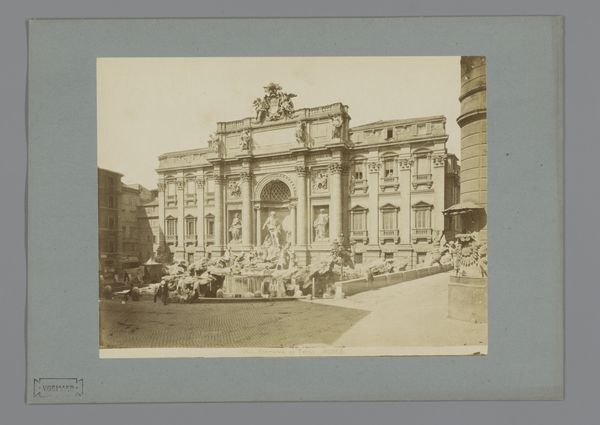
photography, albumen-print
#
impressionism
#
photography
#
cityscape
#
albumen-print
Dimensions: height 219 mm, width 275 mm
Copyright: Rijks Museum: Open Domain
Editor: This albumen print, "Gezicht op de Opéra Garnier in Parijs," believed to have been taken between 1870 and 1890, is incredibly captivating. It really captures a bustling Parisian scene, yet there’s almost a muted quality to the whole thing. What strikes you most about it? Curator: Well, let's consider the albumen print itself, a process dependent on egg whites. The materiality speaks volumes about photographic production in that era. Note the shallow depth of field and limited tonal range. These factors constrain the photographer, shaping the image. What social structures enabled or demanded images like this? Editor: So you're focusing on the technical process and the cultural needs it might reflect? I guess I was just seeing it as a nice historical view. Curator: Exactly. Consider how the construction of the Opéra Garnier and the broad avenues around it were tied to Napoleon III's urban renewal projects – efforts to modernize and control Paris. The photograph, as a reproducible commodity, made this spectacle widely available, didn't it? Who could afford this photograph? And what sort of value does that give the picture as historical artifact? Editor: So, the photograph itself, the physical object, is part of the story of Paris's transformation? And it implies class and economic structure because it was made available for purchase and distribution? Curator: Precisely. We’re looking at more than just an image of a building; we are analyzing the entire process, production, and consumption within its historical context. The albumen process itself connects directly to 19th-century material practices. Editor: That’s fascinating, it’s amazing how much information is embedded in the photographic materials and how it was made. Curator: Indeed. Examining art through a materialist lens opens up avenues to see it as a product of its time. We avoid elevating it as simply a product of "genius" by better appreciating the means and conditions of production.
Comments
No comments
Be the first to comment and join the conversation on the ultimate creative platform.
